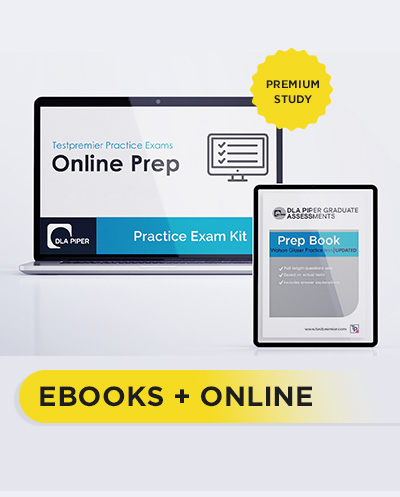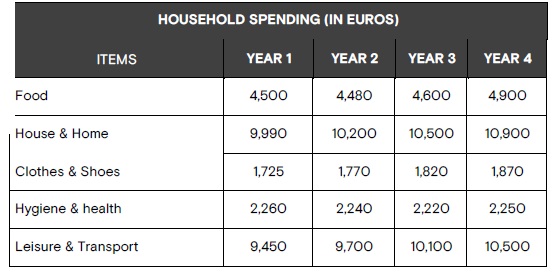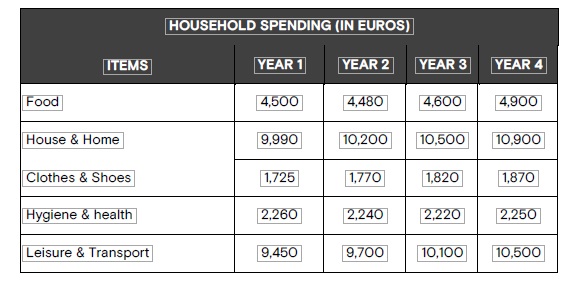DLA Piper Online Practice Test
DLA Piper, a global law firm known for its commitment to innovation and excellence, offers aspiring legal professionals the opportunity to join their ranks. The first step on this exciting career path is to successfully navigate the DLA Piper Practice Aptitude Test. we will guide you through what you need to know about the test, share valuable tips to help you ace it, and set you on your way to a rewarding career in law.
Understanding the DLA Piper Practice Aptitude Test
The DLA Piper Practice Aptitude Test is designed to assess your cognitive abilities, problem-solving skills, and critical thinking abilities, all of which are crucial for success in the legal profession. The test evaluates how well you can analyze complex information, think logically, and make sound decisions—skills that will be essential in your role as a legal professional.
Key Components of the Test
- Numerical Reasoning: This section evaluates your ability to interpret numerical data, solve mathematical problems, and draw conclusions from numerical information. Expect questions related to financial data and statistics.
- Verbal Reasoning: In this part of the test, you will be assessed on your comprehension skills. You will read passages of text and answer questions related to them, demonstrating your ability to extract relevant information and draw inferences.
- Critical Thinking: This section assesses your ability to analyze and evaluate arguments and information critically. You’ll encounter questions that require you to identify strengths and weaknesses in arguments and make reasoned judgments.
- Situational Judgment Test (SJT): The SJT presents you with real-life scenarios that legal professionals commonly encounter. You’ll need to demonstrate your ability to make ethical and practical decisions in these situations.
Tips for Excelling in the DLA Piper Practice Aptitude Test
- Familiarize Yourself with the Format: Begin by understanding the format of the test and the types of questions you will encounter. Practicing with sample tests can help you become more comfortable with the format.
- Manage Your Time: Allocate a specific amount of time to each question or section. Don’t linger on one question for too long; move on and return if necessary.
- Regular Practice: Consistent practice is key to success. Use available online resources and DLA Piper’s practice materials to hone your skills.
- Brush Up on Basics: Ensure your foundational knowledge in math, English, and logical reasoning is strong. This will help you tackle numerical, verbal, and critical thinking questions more effectively.
- Read Carefully: In the verbal reasoning section, read the provided text carefully. Avoid making assumptions and rely on the information presented.
About DLA Piper company
DLA Piper is a multinational law firm with offices in more than 40 countries throughout America. DLA Piper offers graduate programs in a range of exciting business areas.
DLA Piper Aptitude tests formats; What to expect:
DLA Piper mostly uses Watson Glaser-style tests for its candidate selection. The sections on the assessments may include any of the following test sections, depending on the role that you applied to and also the country you are applying from:
- Written Exercise
- Case Study
- Situational Judgement Test
- Presentation
- Proof Reading Test
- Personality Test
Free DLA Piper Assessment Practice Tests and Worked solutions
Question-1:
How much was spent on Clothes and Shoes in year 5 if the same percent increase was maintained as between year 3 and year 4?
A. 1,920 Euros
B. 1,921 Euros
C. 1,922 Euros
D. 1,934 Euros
E. 1,935 Euros Answer (A)
Question-2
In year 3, how much more was spent on house & home than on hygiene & health?
A. 8,080 Euros
B. 8,280 Euros
C. 8,480 Euros
D. 8,680 Euros
E. 8,880 Euros
Answer (B)
Question-3
Which of the items accounts for the highest percent change between year 2 and 3?
A. Food
B. House & Home
C. Clothes & Shoes
D. Hygiene & Health
E. Leisure & Transport
Answer (B)
Question-4
What is the total percent change in money spent on hygiene & health between year 1 & year 4?
A. 0.4% decrease
B. 4% increase
C. 4% decrease
D. 0.4% increase
E. 5% decrease
Answer(A)
Question-5
What proportion of the medals won by France are Silver?
A. 20%
B. 30%
C. 40%
D. 50%
E. 60%




